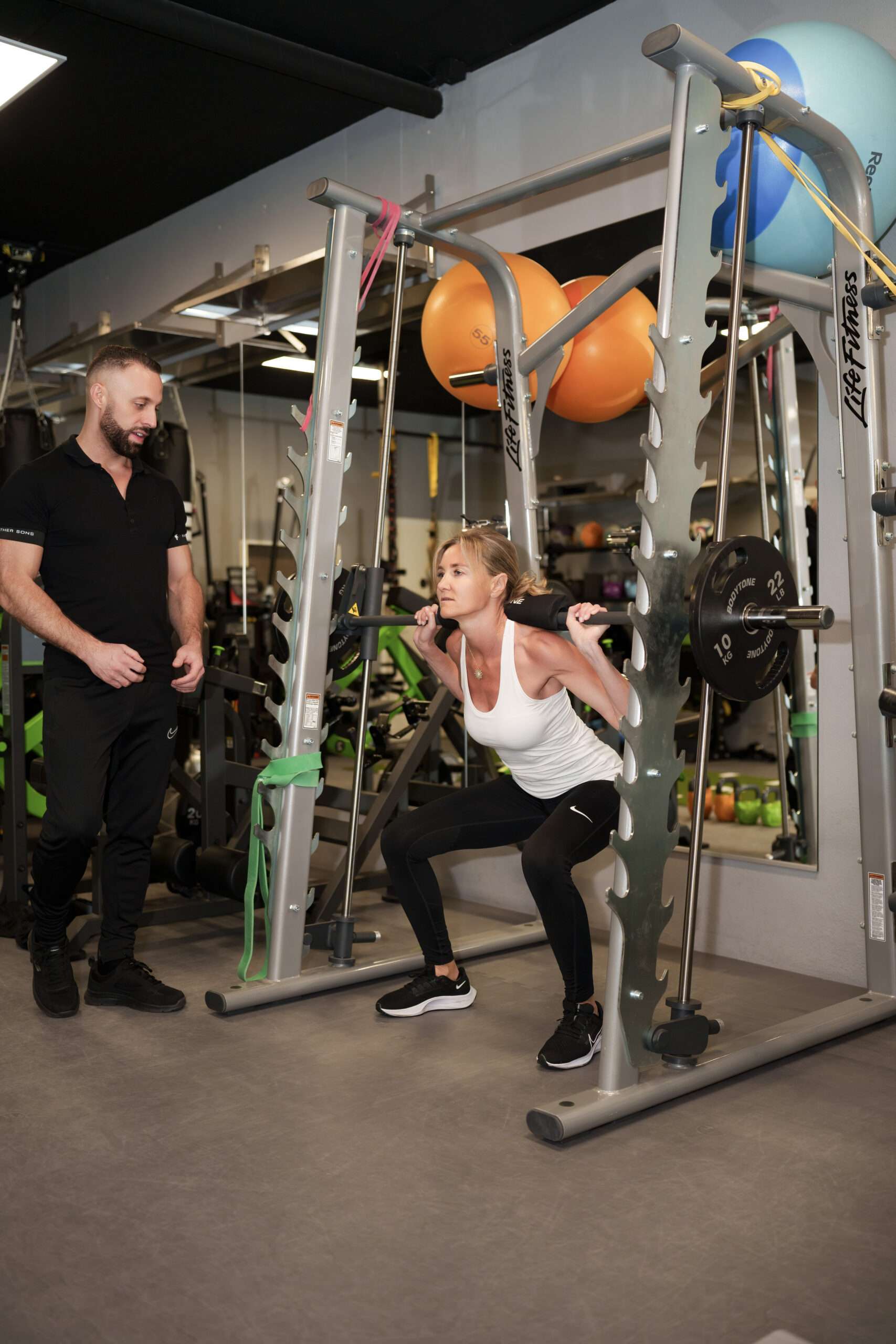Introduction
Welcome to a new chapter in your fitness journey where personal attention meets expert guidance. Our 1-to-1 personal training service is designed to unlock your potential, accelerate your progress, and transform your life through personalized workout plans and constant motivation. Experience the power of dedicated coaching, designed around your goals, your schedule, and your unique fitness journey. Are you ready to surpass your fitness goals and elevate your overall well-being? Take the first step today, and let's embark on this transformative journey together.
Still Have Questions?
These are some of the most commonly asked questions.
1 to 1 personal training, also known as one-on-one personal training, is a type of fitness program where a personal trainer works individually with a client. The trainer designs a bespoke workout routine based on the client's fitness goals, physical condition, and personal preferences, and provides direct supervision and guidance during each session to ensure proper form and maximize results.
Yes, personal trainers often work one-on-one with clients to help them set and pursue their fitness goals. This includes creating a personalized fitness plan, monitoring their progress, and making necessary adjustments to the program as the client's fitness level improves.
A 2 on 1 personal training program involves one personal trainer working with two clients simultaneously. This setup is often used by friends, couples, or individuals with similar fitness goals. It allows participants to share the cost of the session, while still receiving personalized instruction and feedback.
One-on-one training is effective because it provides individual attention and customized workout programs. It ensures that the trainer's focus is solely on one client, allowing them to correct form, adjust exercises, and provide guidance based on the individual's specific needs and progress. This personal approach often leads to improved results and increased motivation.
Absolutely, 30-minute personal training sessions can be very effective. They are often intense, focused, and efficient, making them ideal for people with busy schedules. The key to their success is the personalized attention from the trainer, who can ensure that each minute is used effectively to meet the client's fitness goals.
The number of sessions with a personal trainer depends on an individual's fitness goals, current physical condition, and schedule. Some people might see significant progress with two or three sessions per week, while others might benefit from more frequent sessions. A trainer will typically assess a client's needs and recommend a suitable schedule.
Yes, 1 on 1 coaching can be very beneficial. This format allows for personalized instruction and feedback, and the coach can adapt the program as the client progresses. It also offers the chance to build a strong relationship between the coach and the client, which can be motivating and lead to better results.
While one to one teaching has many benefits, there can be a few disadvantages. It might be more expensive than group classes or online programs. Some individuals may feel more pressure or anxiety in a one-on-one situation. Also, scheduling conflicts could potentially arise as both the trainer and the client need to coordinate their timings.
The six principles of one-on-one training often include:
- Individualization: Each client’s program should be tailored to their individual fitness level, goals, and preferences.
- Progression: The intensity and complexity of exercises should increase over time to challenge the body and promote improvement.
- Overload: The body must be subjected to stress beyond its comfort zone to stimulate growth and improvement.
- Adaptation: The program should adapt to the client's progress and changing needs.
- Recovery: Adequate rest and recovery times should be built into the training program to prevent overtraining and injury.
- Specificity: The training should be specific to the client’s fitness goals, whether it's improving cardiovascular health, building strength, or enhancing flexibility.
© Body-Up Personal Training. All Rights Reserved.

